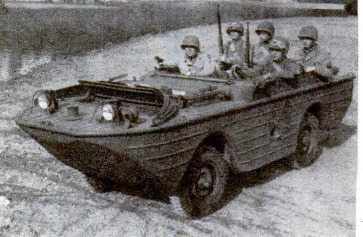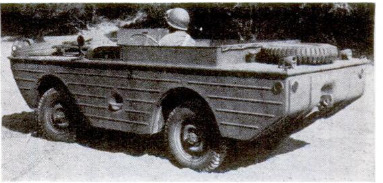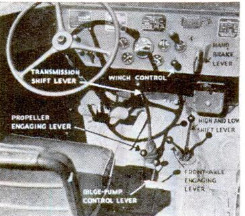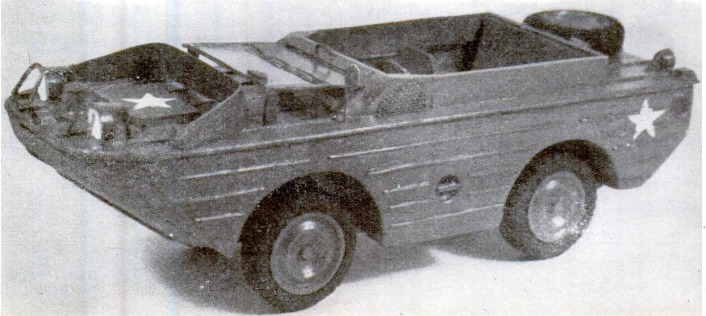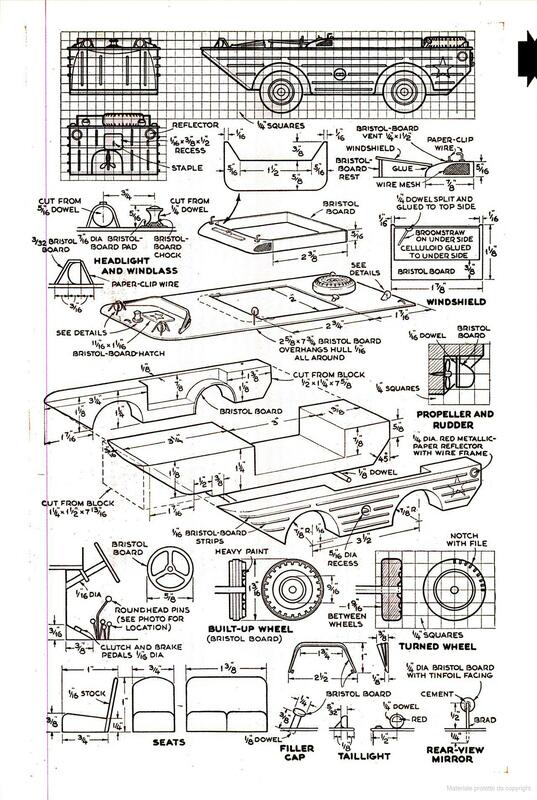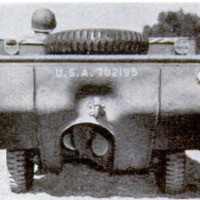-
Title (Dublin Core)
-
Seagoin' jeep
-
Article Title and/or Image Caption (Dublin Core)
-
Seagoin' jeep
-
extracted text (Extract Text)
-
BABY brother to the familiar jeep, our
Army's 1/4 ton amphibian (Model GPA)
can do almost anything that its older relative
can—and then some. The jeep, of course,
performs amazing deeds of derring-do over
a variety of terrain and even defies gravity
by taking off and flying for a second or so
at a time, but it can’t, alas, swim. So the
seagoin’ jeep was conceived.
This vehicle has a scow-shaped, water-
tight body and is equipped with a propeller
and a rudder. The rudder is coupled to,
and works continuously with, the steering
wheel; so the sole thing that need be done
by the operator when going from land to
water is to pull on a propeller-engaging
lever that is located near his right hand.
He doesn’t even have to come to a stop to
do this. For operating in rough water, there
is a hinged spray shield on the foredeck that
can be swung forward for protection. A
spare wheel is carried in an accessible spot
on the afterdeck. All of the seat cushions
are removable and can be used for life pre-
servers if mischance or enemy fire makes
it advisable to abandon ship.
There is a power winch on the forward
deck. If the amphibian gets mired in mud
or is faced by a steep, slippery bank, a line
is passed around a convenient tree or other
strong anchor and around the winch; then
the winch is engaged and the jeep pulls
itself out of trouble. This winch is also
useful when another vehicle gets bogged
down, for then the amphibian can come to
its aid.
With a wheelbase of 84” and an over-all
length of about 182”, the little hybrid weighs
approximately 3,400 lb. It can carry an
800-1b. payload in addition to its own equip-
ment and, thanks to its sturdy four-cylinder,
60-hp. engine, can carry that load at a speed
of about 60 m.p.h. over good roads.
The model is constructed to a scale of 1/2
to the foot. This size is large enough so you
can go into sufficient detail to make the
work extremely interesting, yet it isn't so
large that it will be unwieldy.
Three wooden blocks are used in making
the body, as shown in the accompanying
perspective drawing. Round off the face of
the center block to give a duck-breasted
effect; then cut the top front face off square
3/16” back from the edge. Shape the two
outer blocks along the forward outboard
edges to carry out the duck-breasted con-
tour. After jigsawing the semicircles in
these pieces to take the wheels, line the two
after ones with Bristol-board mud shields,
gluing them in place. Bore a 5/16” recess
in the outboard face of each outer block and
glue a bit of Bristol board in each recess to
simulate a toe hold.
Make the deck from Bristol board. Note
that it overhangs the body 1/16” all around.
Fashion the lights, winch, hatch, chocks,
rear-view mirror, and filler cap from bits
of dowel, Bristol board, paper-clip wire, tin
foil, and red metallic paper, as indicated in
the details, and glue them in place. As-
semble the cockpit coaming from wood and
Bristol board. A small piece of wire mesh is
cemented to each end of the wooden part of
the coaming to give the effect of a screened
ventilation-duct opening.
‘The windshield is made of celluloid and
framed with Bristol board. A broomstraw
and a split dowel, glued to the celluloid,
serve to simulate a windshield wiper. The
after end of the windshield is glued to the
cockpit coaming and the forward end rests
on two Bristol-board supports, which are
cemented to the deck. Atop the coaming are
mounted ventilation controls, which are
fashioned from paper-clip wire and Bristol
board.
You can turn the five wheels in your
lathe, but if turning facilities are not avail-
able, make the wheels from several glued-up
Bristol-board disks. To cut these disks
quickly, clamp a razor blade in a drafts
man’s ink compass, set the compass to the
proper radius, and scribe out the material.
Be sure to use a new blade, since an old one
‘may not produce a smooth cut. After gluing
the disks together, round off the edges some-
what by sanding them.
The axles are lengths of 1/8 dowel. They
are glued to the body and four of the wheels
are glued to them. The fifth wheel is ce-
mented to the after deck. Bristol board, as
shown in one of the details, is used when
making the spray shield that rests on the
forward deck Carve two single seats and
one double one from wood and glue them in
the cockpit. The two single ones go in front.
Just forward of the left-hand front seat, in-
stall the controls. These consist of a steer-
ing wheel, which is built up of Bristol board
and doweling; five shift levers, which are
roundhead pins; a footboard, which is a
3/16" by 3/8 by 2 1/4 triangular wood block;
and clutch and brake pedals, which are cut
from 1/16” doweling. A control panel may
be simulated with hand-drawn dials and a
few rounded bits of dowel glued to the dash.
Cut two recesses in the after end of the
‘main body block—one for the propeller and
the other for a towing hook. Dimensions
for these recesses can be taken off the rear
view and the propeller and rudder detail.
The towing hook is simply a staple that is
stuck part way into the body. The rudder
is made from Bristol board and has a dowel
stock. You can purchase the propeller,
which is 1/2 in diameter, from a model
supply store.
Make the four safety reflectors from red
metallic paper and put them in frames made
from thin wire; then cement each one in its |
proper place on the body. Assemble the
model and do any final sanding that may be
necessary; then glue 1/4 Bristol-board rub
strips to the body, as indicated. Finish with |
one or more coats of olive-drab quick-drying
airplane dope. Paint the tires flat black.
The stars can be decalcomanias or white-
paper cutouts, or you can paint them in
place, using a homemade stencil as a guide.
-
Contributor (Dublin Core)
-
John J. Gallivan (article writer)
-
Language (Dublin Core)
-
eng
-
Date Issued (Dublin Core)
-
1945 - 05
-
pages (Bibliographic Ontology)
-
170-172
-
Rights (Dublin Core)
-
Public domain
-
Archived by (Dublin Core)
-
Sami Akbiyik
-
Marco Bortolami (editor)
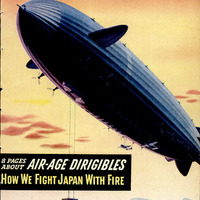 Popular Science Monthly, v. 146, n. 5, 1945
Popular Science Monthly, v. 146, n. 5, 1945

